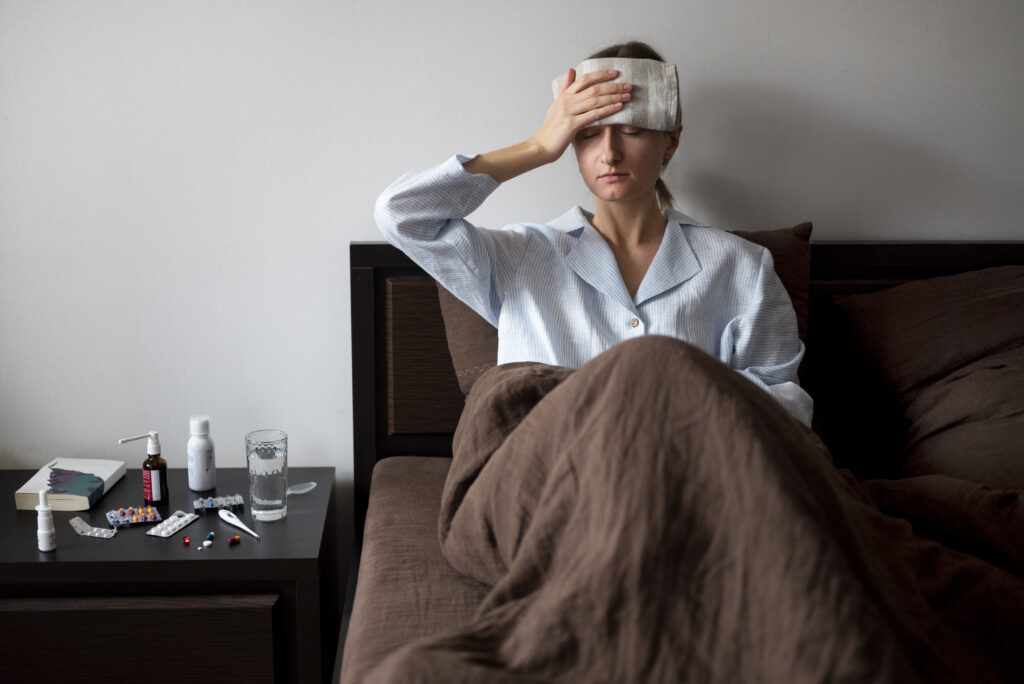By
Newswise — For most healthy adults, a COVID infection means a few rough weeks of symptoms and then a return to normal life. But in up to 20–30% of all COVID cases, a few weeks stretches into months or even years. For these long COVID sufferers, symptoms can be frustratingly complex, varied, and debilitating. People who were once serious athletes can’t jog around the block, and executives who led companies can’t remember what they were doing 10 minutes ago.
University of Utah Health’s Long COVID Clinic aims to find solutions. Since opening its doors three years ago, the clinic has treated 3,150 patients and studied the condition to find better treatments.
Jeanette Brown, MD PhD, who leads the clinic, says much has been learned since the first patients came forward with long COVID symptoms. But, she adds, research continues into what groups are most at risk for long COVID, how to treat it, and the range of symptoms and recovery.
What is long COVID and how is it currently treated?
Long COVID is commonly marked by a constellation of symptoms experienced days to weeks after the initial infection resolves, including fatigue, brain fog, an inability to exercise, and wild swings in heart rate, Brown says. Immune overactivation involving hives, swelling, trouble breathing, and diarrhea are other common long COVID symptoms.
But Brown says there are more than 50 different symptoms. “So it definitely is not a one-size-fits-all phenomenon for each patient,” she says.
The clinic treats patients by helping them function despite their symptoms. Clinicians spend an hour with new patients going through all of these. “We pick the most bothersome things, what’s inhibiting their life the most, and attack those,” Brown says.
For patients with immune overactivity, antihistamines can be helpful, while those with brain fog can benefit from speech therapy, Brown says. Other medications can help regulate heart rate and blood pressure.
How can long COVID patients avoid extreme fatigue?
Because worsening fatigue after mental or physical exertion is a common and draining long COVID symptom, the center is studying how patients should best “pace” themselves, balancing activity and rest. In rehabilitation for many conditions, people need to push themselves. But long COVID patients who overdo it can feel miserable and be bedridden for days, often setting back their recovery.
The center is starting a study to see if using fitness wearables, like smart watches, can help patients pace themselves by understanding their heart rate limitations. Since memory problems are common in long COVID, the wearables can also provide reminders not to overexert.
“If we can keep people from crashing longer and longer, it seems they do better,” Brown says.
Through another pacing study, the clinic hopes to learn how much patients can safely exert themselves and what types of physical therapy could be helpful or harmful for certain patients.
Who’s at risk?
Most of the clinic’s patients are women, who are more than 40% more likely to get long COVID than men. Researchers are trying to determine why women are more frequently affected than men, but differences in immune function and hormones may play a role, Brown says. A recent study by the center found that pregnant people had an overall lower long COVID rates than adults overall—though the rate of long COVID was still almost one in 10.
“It’s possible that alterations in the hormones of pregnancy and the immune status during pregnancy may impact people’s overall risk,” Brown says.
What should people do to prevent long COVID? What if they already have it?
For now, avoiding long COVID means avoiding infection and getting vaccinated against the virus, Brown says. More doses seem to mean more protection. A recent study found that people who get two COVID vaccine doses before infection are 37% less likely to develop long COVID than unvaccinated people. But people with three doses before infection were 69% less likely.
For people with long COVID, including those who may have suffered for years, Brown says it’s not too late to find care—and people should look for a reputable provider.
“Some people may have experienced long COVID back in 2020 or 2021, when we were just learning on the fly,” she says. “We know quite a bit more now than we used to, and patients with long COVID don’t need to suffer alone.”
###

